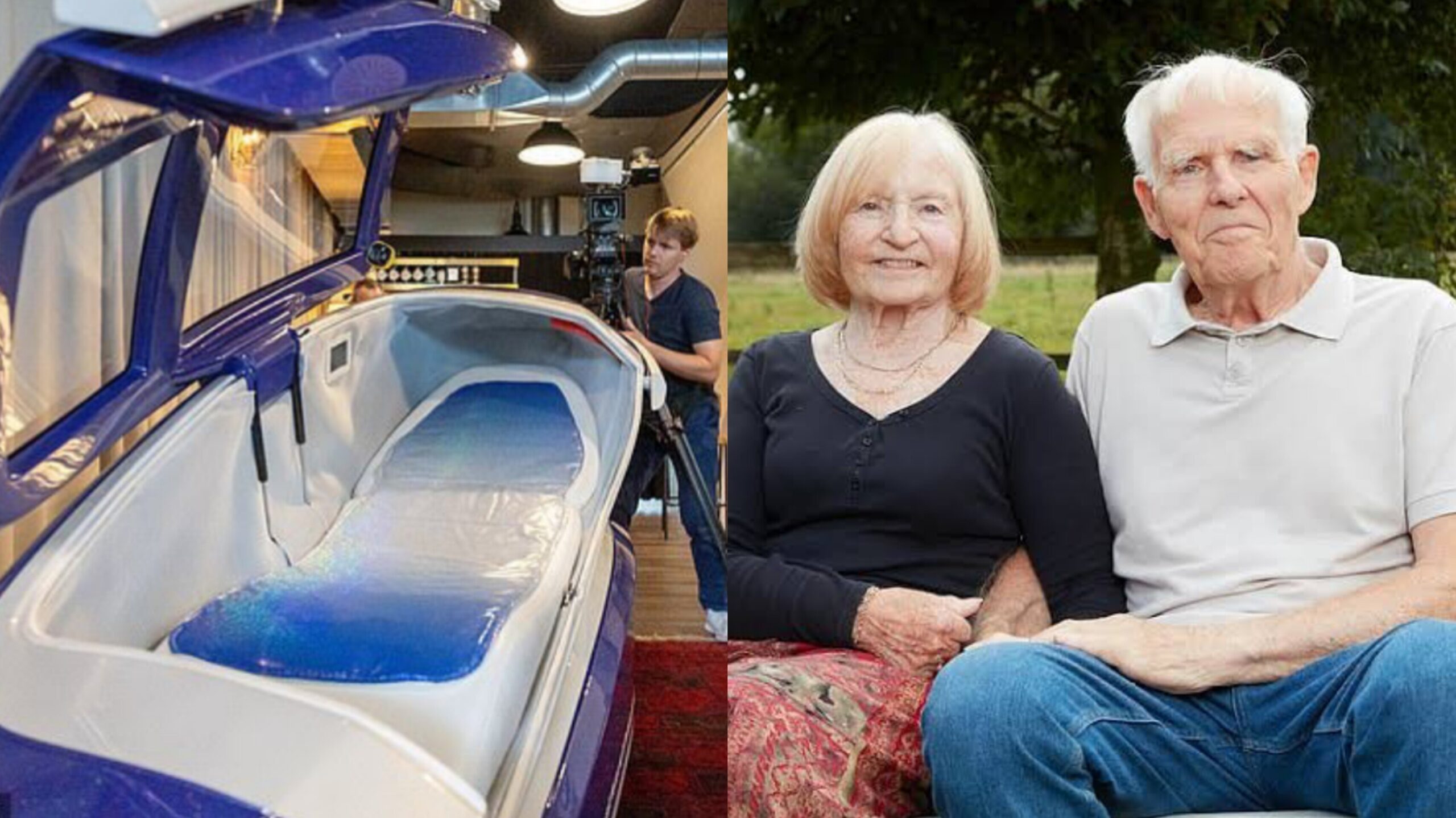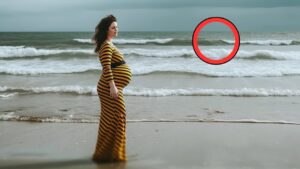Former RAF engineer, 86, and his nurse wife, 80, sign up to die in each other’s arms as first British couple to use double suicide pod in Switzerland after her dementia diagnosis
A former RAF engineer and his wife are signing up to become the first British couple to use a double suicide pod.
Peter and Christine Scott, who have been married for 46 years, made the decision after former nurse Christine, 80, was diagnosed with early-stage vascular dementia several weeks ago.
The couple want to travel to Switzerland to die in each other’s arms in the death capsule – known as the Sarco – to mark the end of their long and happy marriage.
It has not yet been tried but its creator, Australian-born Philip Nitschke – nicknamed Doctor Death by right-to-life opponents – expects the first suicide to take place soon. The Scotts say they will wait until the new twin model of the machine is launched later this year.
In an extraordinarily frank interview at their home in the Suffolk village of Mellis, they revealed their plans in the hope of lending weight to the campaign to allow assisted dying in the UK, where it is illegal.
Currently, a backbench Labour MP is considering bringing forward a private members’ bill after Sir Keir Starmer backed having a free Commons vote on the issue.
Peter said: ‘We have had long, happy, healthy, fulfilled lives but here we are in old age and it does not do nice things to you.
‘The idea of watching the slow degradation of Chris’s mental abilities in parallel to my own physical decline is horrific to me.
‘Obviously I would care for her to the point I could not, but she has nursed enough people with dementia during her career to be adamant she wants to remain in control of herself and her life. Assisted dying gives her that opportunity and I would not want to go on living without her.
Yet look at the alternative. The chances of getting prompt NHS treatment for the ailments of old age seem pretty remote so you end up trapped by infirmity and pain.
‘I don’t want to go into care, to be lying in bed dribbling and incontinent – I don’t call that a life.
‘Finally, the Government swoops in to take your savings and your house to pay for it all.’
Currently he is wrestling with all the paperwork required for the full application.
He is anxious about Christine’s application since securing assisted suicide for dementia sufferers is harder than for people with, for example, terminal cancer.
The Sarco was invented at the request of British stroke victim Tony Nicklinson who was left conscious but unable to move or speak following a stroke.
He approached Nitschke to make a death pod that could be operated by the blink of an eye, the only communication left to him.
Nicklinson, who begged the courts to be legally allowed to die but was refused, eventually starved himself to death in 2012, before the Sarco was created.
The pod works by replacing air, which is 21 per cent oxygen and 79 per cent nitrogen, with 100 per cent nitrogen. This swiftly renders the occupant unconscious and they then stop breathing in a process that takes less than ten minutes.
A camera inside the pod records their final moments and the footage is handed to a coroner.
It is anticipated that the Sarco, which is made using a 3-D printer, will be free but people must be able to pay for their body to be removed by funeral directors afterwards. Peter and Christine would like to be cremated and have their ashes repatriated and scattered in the graveyard of their local church.
The only additional currently known cost would be £16 for the liquid nitrogen used in the pod, making it more economical than other assisted dying clinics, which typically charge £10,000.
Speaking to The Mail on Sunday, Dr Nitschke confirmed his couple’s suicide pod was ready for launch. He said: ‘The capsule for two people works exactly the same as the single Sarco but there is only one button so they will decide between them who will push it. Then they’ll be able to hold each other and one of them will push the button.’
Christine already has her final days planned. ‘I’d like to go walking with Peter in the Swiss Alps, by a river. I’d have a beautiful plate of fish for my last supper, and enjoy a great bottle of Merlot.
‘I’d make a playlist including Wild Cat Blues and The Young Ones by Cliff Richard and I’ve found a poem called Miss Me But Let Me Go, which sums up exactly how I feel.’
Appropriately, the 1930s song Goodbye by the American composer Gordon Jenkins will be on Peter’s playlist. A former RAF aero engineer, he worked in the aviation industry around the world before returning to his native East Anglia to carve a second career as a careers adviser.
He and Christine fell in love at first sight after meeting in a jazz club. She was a nurse with a small daughter from a first marriage. After marrying, they had a son together.
Their children have been encouraging them to move into a retirement complex but the couple are determined to make assisted dying a possibility.
Christine says: ‘It’s a lovely life but I have this diagnosis, and that’s crystallised our thinking. Medicine can slow vascular dementia but it can’t stop it. At the point I thought I was losing myself, I’d say: ‘This is it, Pete, I don’t want to go any further.’
He adds: ‘I’ve said to her, ‘You make the decision and I’ll be with you.’ Death holds no problem for me whatsoever.
‘I’d just give her a big hug and say: ‘Hope to see you later.’












